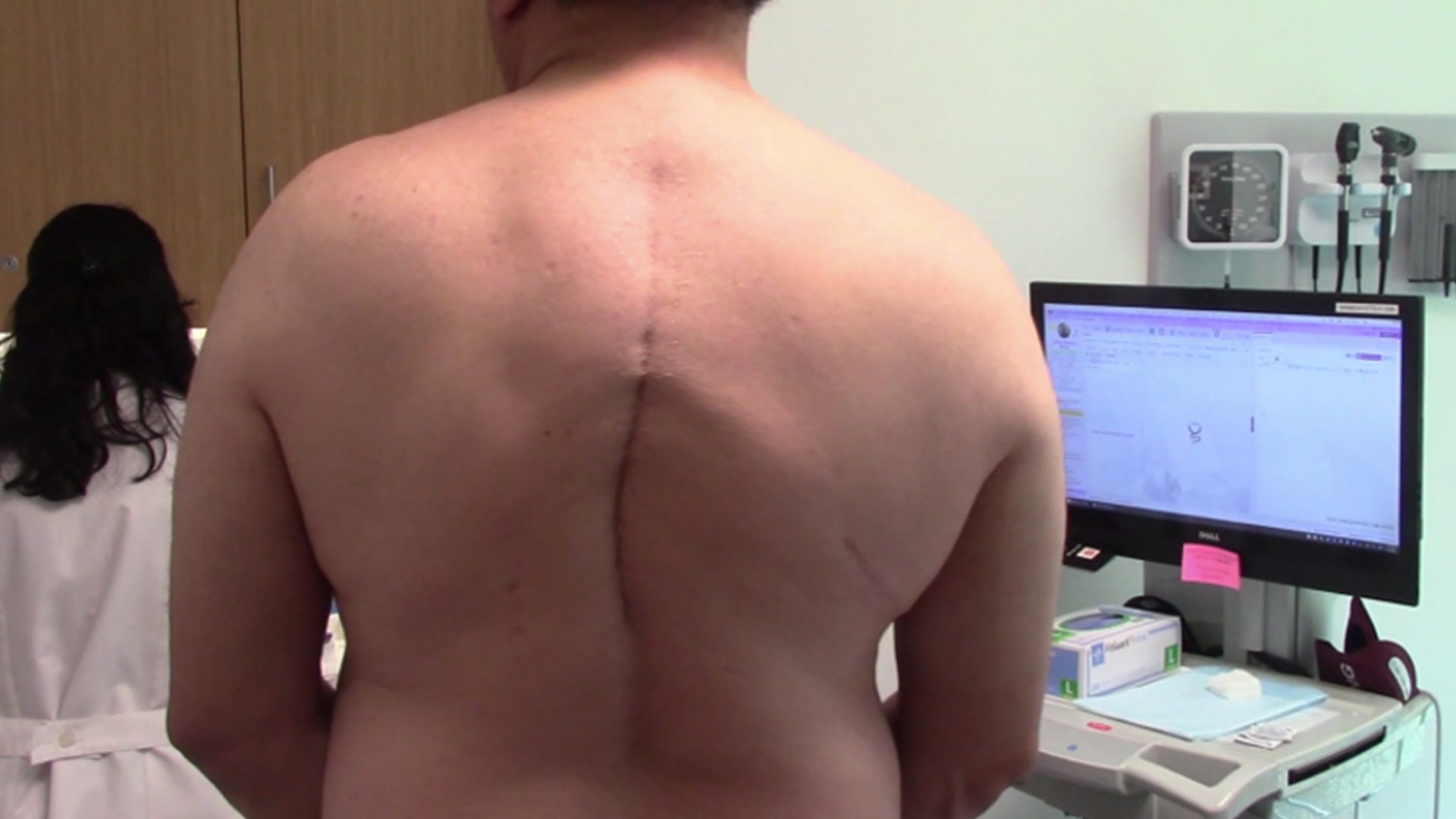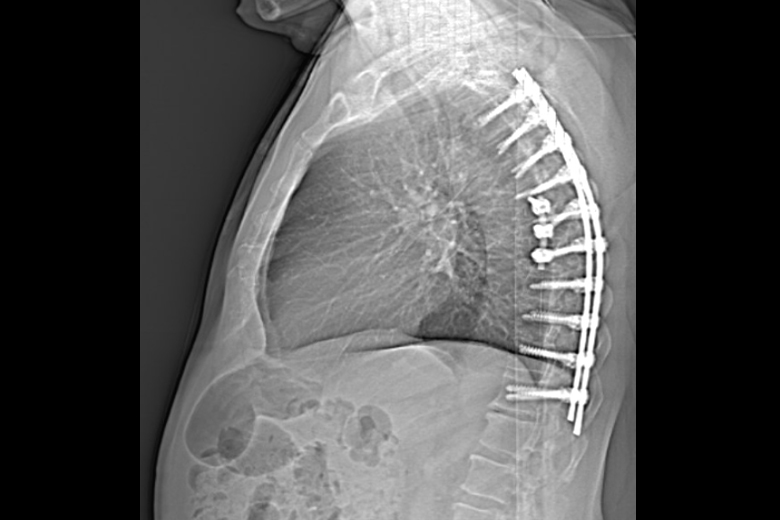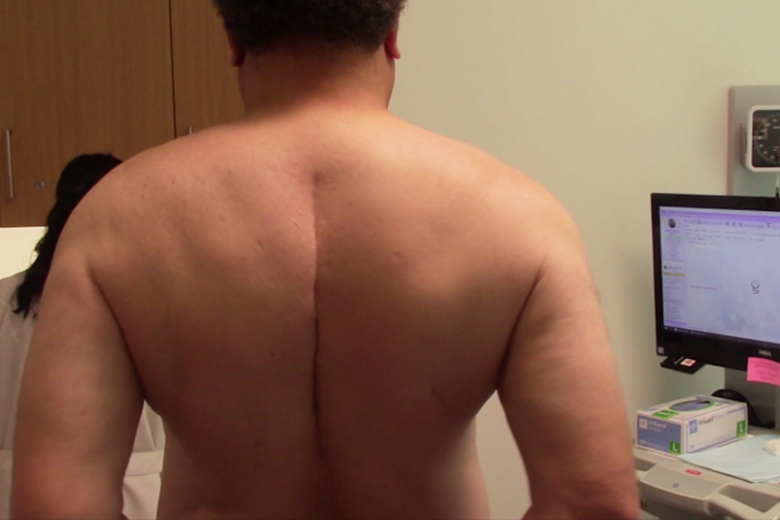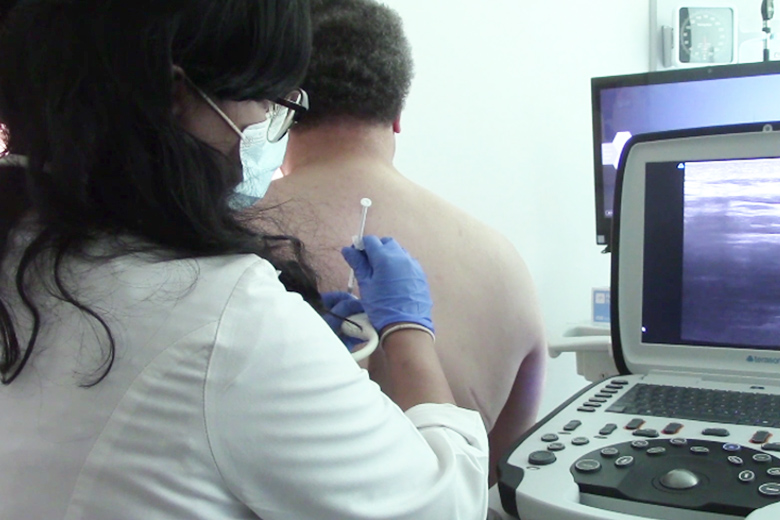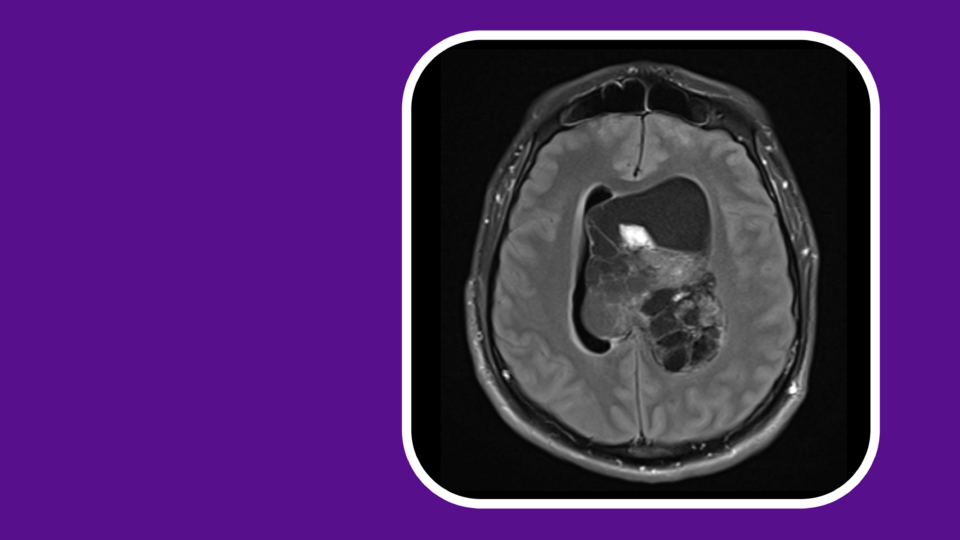Proper Diagnosis and Treatment Brings Spasm Relief
After being injured in 9/11, a retired firefighter underwent an extensive posterior thoracic laminectomy and fusion surgery for resulting degenerative spine disease. While the surgery was uncomplicated, 3 months after the procedure he developed powerful involuntary muscle spasms surrounding the surgical scar.
The movements continued 24/7, persisting in sleep and causing pain, insomnia, and difficulty breathing. After seeing multiple specialists including several neurologists, he received no formal diagnosis and saw no improvement despite receiving various medications and procedures. His movements had been present for 7 years by the time he met Steven J. Frucht, MD, director of NYU Langone Health’s Division of Parkinson’s and Movement Disorders, in July 2021.
“When he first presented, I discussed with him that he had an unusual, peripheral movement disorder, likely a form of peripheral myoclonus,” Dr. Frucht says.
After examination, he was diagnosed with scar dancing syndrome, a very rare form of peripheral myoclonus that manifests in the weeks to months after surgery at the site of the surgical incision. The condition is classified as a peripherally-induced movement disorder, and while the pathophysiology remains unclear, it is thought to be due to aberrant reinnervation of the incised muscles with ephaptic transmission to surrounding neurons.
“The management of peripherally-induced movement disorders is extremely challenging as most cases are refractory to standard treatments,” says Patrick Drummond, MD, a clinical assistant professor of neurology. “Botulinum toxin is the most commonly used treatment for symptomatic cases, but with a success rate of only 20 percent.”
“The management of peripherally-induced movement disorders is extremely challenging as most cases are refractory to standard treatments.”
Patrick Drummond, MD
Using ultrasound and electromyography, Dr. Drummond was able to inject botulinum toxin accurately and safely into the muscles involved, which remarkably provided the patient complete and sustained relief for the first time in 7 years.
“Interestingly, the treatment effect of the injections has persisted longer than our initial expectations,” Dr. Drummond says. “Based on these results, we’re planning further studies to confirm the effectiveness of botulinum toxin in such patients.”


